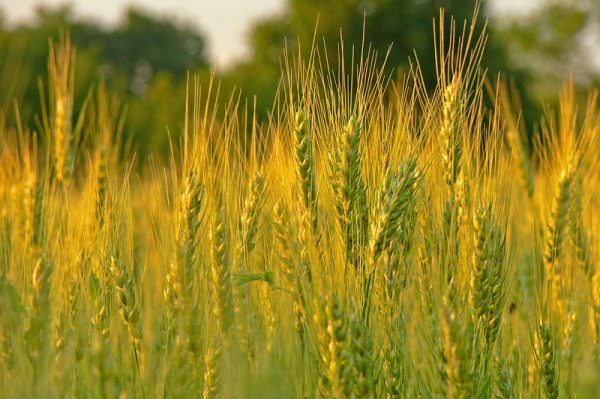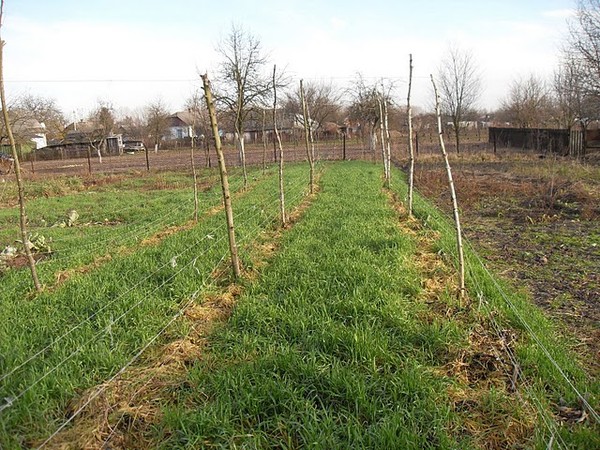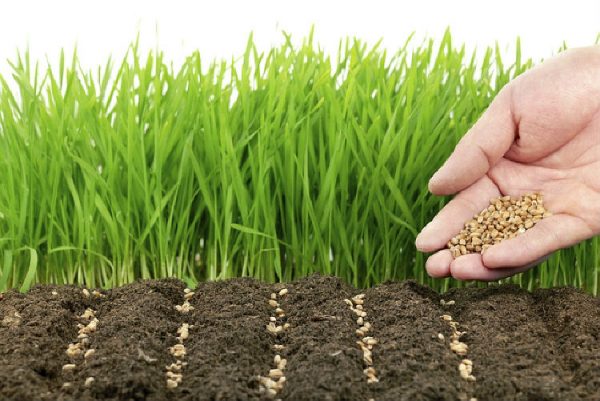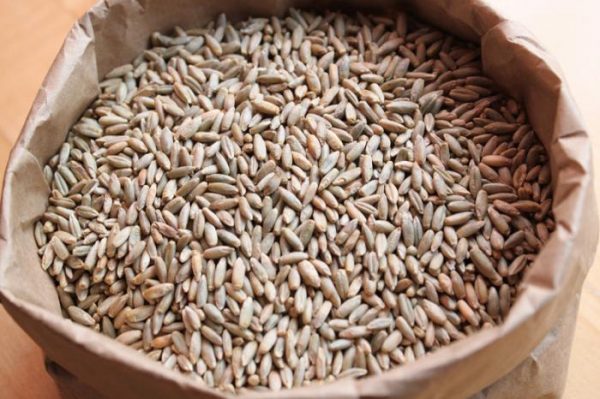Simple and effective rye fertilization for your garden
Content
Description
Buckwheat, rye, red clover are often used as siderates, that is, crops that are grown not for the purpose of obtaining their harvest, but for the purpose of improving the soil of the site. Thanks to them, the soil receives organic fertilization, protection from wind and water - it is not swollen by strong autumn winds, and is not eroded by spring floods. Their roots sprout to a great depth, cutting through the soil, and then decompose - the earth becomes looser with an improved structure and a higher content of nutrients.
Green manure crops can be sown in spring or autumn in areas designated for late vegetables, it is good to plant potatoes, tomatoes, cucumbers, pumpkins, zucchini after them. Sowing them is recommended after onions, garlic, beets, carrots to restore the structure and feed the soil with organic matter. Green manure is often compared to manure because it becomes an organic fertilizer rich in nitrogen. But using manure on the site is much more expensive and harder, it is much easier to spend only on seeds, and then dig up the green mass before ripening, or even just cut the roots with a flat cutter and allow it to decompose.
Video "What are siderates"
An informational article about what siderates are and what they are for.
Benefits of rye
Rye as a siderat has several advantages. It is quite aggressive, suppresses the growth of all weeds, not only annuals, but even such persistent weeds as thistle or wheatgrass - if you sow it in the fall, then in the spring you will not have to weed the plot. It can even cleanse the area of many pathogenic and pathogenic microorganisms, since its roots secrete certain substances that allow you to fight them. Even the wireworm is getting smaller. Pests and bacteria that have been attracted by vegetables will be minimized in a short time for rye to grow in the garden. This is its great advantage over manure, which, in addition to the benefits of fertilization, brings a lot of weed seeds, and then you have to fight with them.
It is good to sow rye in autumn, August - September, when the garden has already been removed. Before winter, it will have time to germinate, rye winters better than other cereals - it can hold out even without a snow cover. In the spring, as soon as the snow melts, it will begin to grow, quickly gaining green mass. They dig it up at the very beginning of earing, the greens are very tender, they will quickly grind in the ground and turn into fertilizer. When the ears begin to ripen, the greens will become much coarser, it will take more time for them to feed the vegetables that the owners will plant in this area.
The root system of rye is very developed, individual roots penetrate to a depth of 1.5 m.Root passages make the soil lighter, looser, and during growth, the roots choose useful microelements from a depth that is difficult for vegetables to reach, which thus fall into the upper soil layer, making its more fertile.
Why sow rye
In autumn or early spring, when the vegetables have already been harvested or not yet planted, rye can be sown to heal the soil, make it lighter and more permeable to air and water.In the spring it is sown in the cold ground, it will still germinate, it will have time to grow the green mass to the real warmth. The main thing is to plow it into the ground 2 weeks before it is time to plant vegetables in this area.
In autumn, rye is sown after harvesting, it manages to germinate and loosen the soil of the site, and in spring it accumulates a large green mass at a time when not a single crop grows in the garden. Rye is chosen as an intermediate crop because it is undemanding to growing conditions, it practically does not need care. It has amazing phytosanitary properties, thanks to which it not only fertilizes the earth, but also makes it much healthier. There is only one drawback - winter rye greatly dries up the land, the site will have to be additionally watered (if it does not rain in time). When sowing, seeds are not laid deep into the ground: on light soils, it is enough to cover with a layer of 2 cm (so that the birds do not see and not collect), on heavy soils, deepen to 5-6 cm. You can sow in rows with a distance of 10-15 cm, or just scatter the seeds without any order (only cover with earth from the birds). Siderata usually sow thickly.
In the spring, crops are advised to harrow or shallowly loosen, if there are rows, then in the row spacing you can walk with a flat cutter - this contributes to rapid growth, an increase in green mass. That's all the care of the crops. 2 weeks before the expected planting of vegetables, green crops are plowed, buried in the ground. If the ground is soft and the area is small, then this can be done simply with a pitchfork. The roots are usually not dug up, but only cut off, they themselves rot in the ground, fertilizing it at a greater depth than vegetables are planted.
Rye is worth sowing in order to renew and heal the soil while some vegetables do not grow in it. It will help not only get rid of weeds and pathogenic bacteria, but also become an excellent organic fertilizer. Delicate greens, cut before the spikelets ripen, can be laid in a compost pit, or scattered around the site. Some people mulch strawberries with it, such mulch very quickly decays and becomes a top dressing.
Video "When to sow green manure"
Informational video about the best time to sow green manure.




